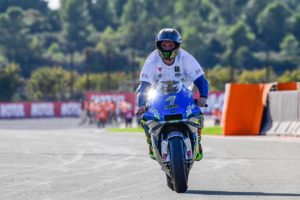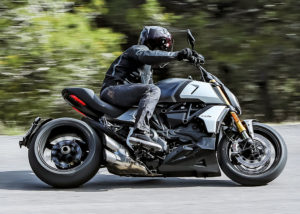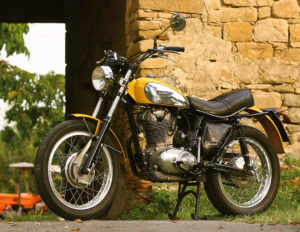Raymond Roche,French, born in 1957, was the first rider to claim the Superbike world title riding a Ducati. It was the year 1990, the first of the exclusive management by the Flammini Group.
After two years in which, however, the championship had hinted at its potential and in which it already clearly transpired that uniqueness that would lead it to assume the importance it has today, in 1990 the qualitative leap was evident, especially from an organizational and promotional point of view, but also thanks to the level of the riders engaged.
Two different trends helped to raise the quality of the riders in the race: the level of what we could call “the specialists” grew (such as Pirovano, Mertens, Phillis, Falappa River, Tardozzi and Polen, just to name a few) and to these were added the talents who had already had the opportunity to highlight themselves in the Grand Prix (in Lucchinelli, the first together with Ferrari to support the role of star of the championship since 1988, McElnea and, precisely, Raymond Roche were added).
Roche made his Grand Prix debut in 1976, at the French Grand Prix, in the quarter-final.
After a few years of giving, when running in 250 and 350 in the same season, in 1980 it landed in 500. In the “Circus” the life of the private rider is hard, so, in 1981 Raymond decided to engage in the Endurance WorldChampionship, which he won in partnership with Jean Lefond.
In 1982 he returned to engage in the 500 World Championship with Suzuki. The fortunes of French will go hand in hand with the spread of the Honda NS 500 among the customer teams; Raymond Roche finished the 1983 season in tenth place.
In 1984, although he still failed to win a Grand Prix, he finished third in the championship, behind Eddie Lawson and Randy Mamola.
Raymond, along with the American, Ron Haslam and Wayne Gardner (all on Honda NS), animated the fight for the lowest steps of the podium in almost every race. Thus, in 1985, the doors of the official Yamaha teamopened, alongside world champion Lawson.
It would seem done, but Roche can’t repeat the good performances of the previous year. So, in 1986, he returned to Honda. The music will not change: Roche seems to be inexorably in descending parable.
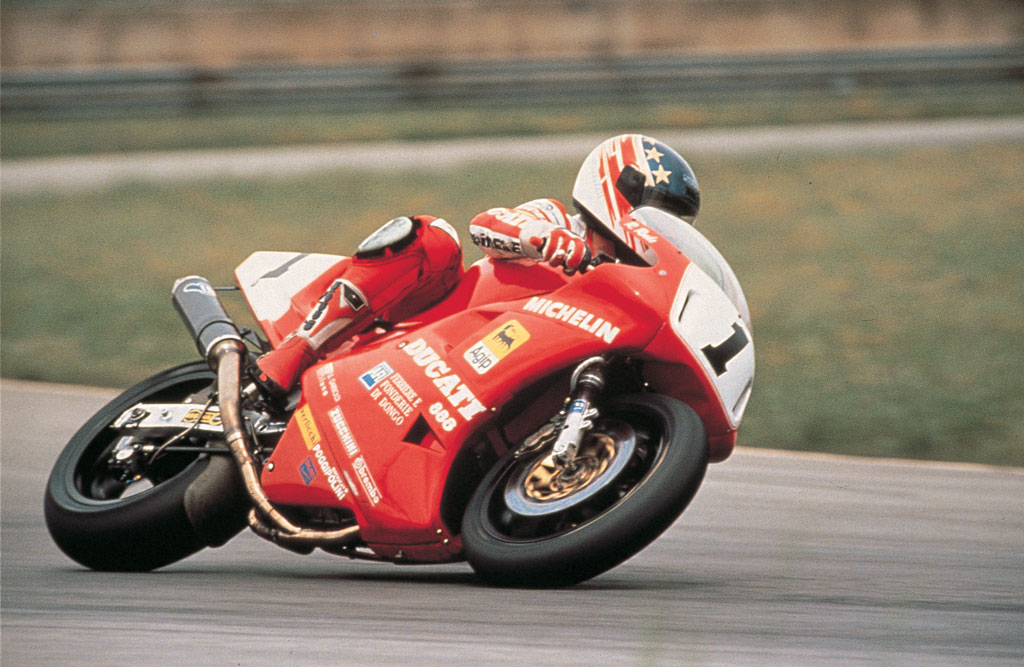
The turning point comes when the ambitions of the Castiglioni brothers cross those of the rider French. The owners of the Cagiva Group finally want a top rider to get the definitive launch of a project they believe in. In 1987 he was alongside Belgian De Radigues and, in 1988, Randy Mamola.
Both teammates will do better than him, with the American having the honour of taking the Italian bike to the podium at the Belgian Grand Prix.
The meeting with the Castiglioni, beyond the lukewarm results with the Cagiva, proved fundamental. Owners also of Ducati,in fact, the Lombard brothers decided to deploy him in the newborn Superbike World Championship, in the team directed by Marco Lucchinelli. 1989 for Raymond will be the year of the competitive rebirth riding the Ducati 851.
With the bike of Borgo Panigale finally reliable, the French will be able to impose itself by centering the double on the Brainerd track,in the USA (the first for a Ducati) and repeating the same result at Hockenheim. In the end it will be third, close to Merkel and Mertens’ Hondas.
Ducati, under the sport of Lucchinelli,grows: together with the ingenuity of Bordi and Mengoli and the experience of Franco Farné,Marco brings to Borgo Panigale the methods learned by the Japanese racing departments.
Ducati, now, is serious and is ready to claim the title of queen of the category.
It happened in 1990, when Raymond Roche, on the redhead, graduated superbike world champion.
The chronicle of an exciting year opens with the double in the inaugural race in Jerez, where the Italian-French also centers the pole and the fast lap. Fast lap also in the next donington race, where Raymond comes in second twice. Then he won Race-2 in Hungary.
The French is very fast: pole and best time in the race also at Hockenheim, before finding his way back to the double in Mosport, Canada. A second place in Brainerd and Austria will then be a prelude to the victory in Race-1 in Sugo, before the new double victory on the home track at Le Mans.
Roche was the first to win the world title with a Ducati in the championship dedicated to maximoto derived from the great series production.
Only in the last part of the season will Fabrizio Pirovano be able to bring him closer, but the points collected by Roche will be enough to guarantee the Ollioules rider the world crown.
With Raymond Roche, Ducati inaugurates a cycle and embarks on a long path of victories that will be untied.
In 1991, still riding ducati, he will be able to make considerable treble (double at Shah Alam, Malaysia, victory in Race-2 at Hockenheim and Mugello). It will finish second, very detached from the American Polen,rising star riding the Ducati.
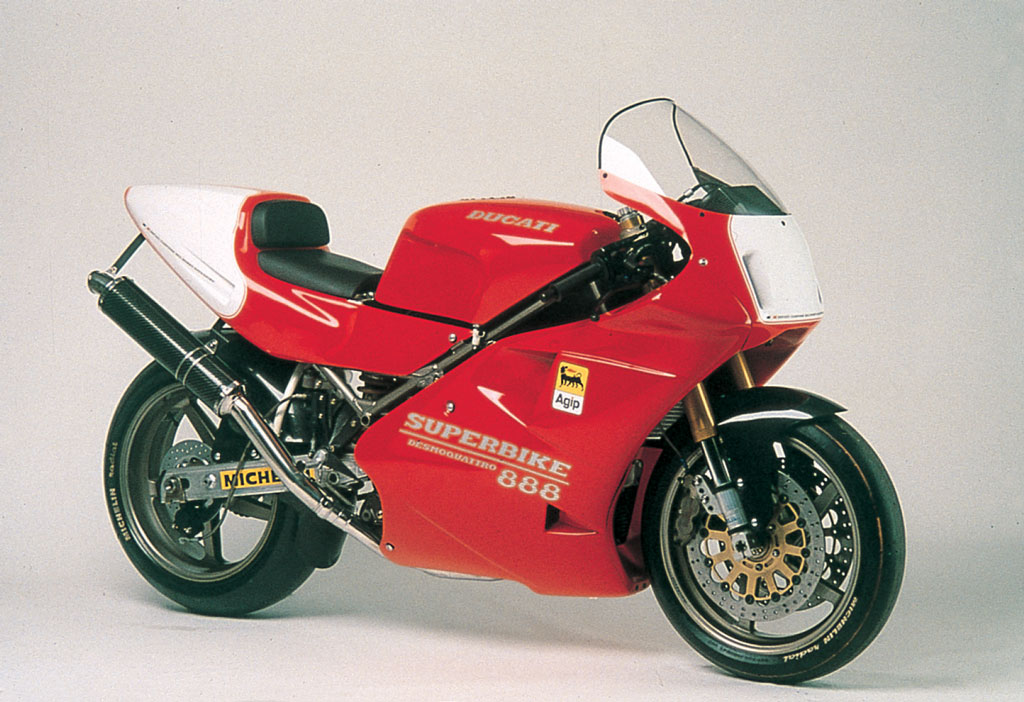
Raymond, however, still has a lot to say: 1992 will still live on the fight between him and the American rider, and in the end it will be only thirty-five points that will separate the French from the Texan of Eraldo Ferracci’s team. Raymond started well, winning Game 2 at Albacete and Race-1 at Donington. Then he will have to undergo the angry return of Doug Polen, before he can center the double at Mugello, win Race-1 in Johor, Malaysia, and Race-2 at Phillip Island.
The history of the 1992 World Cup will give us a Ducati absolutely at the top and the definitive affirmation of riders such as Giancarlo Falappa and Carl Fogarty.
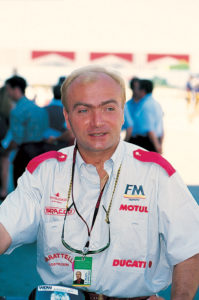
1993 casts some shadow over Roche. The French hangs his helmet on the nail and becomes team manager.
It is precisely the Italian pilot who tells us an episode: “I was first after seven races, Carl was fifth. At one point Roche came up to me and told me I should help Fogarty. How was it possible: me first and he fifth, midway through the championship, and I had to help him? That bothered me, it didn’t make me sleep at night. In practice, it was a matter of favoring English sponsors – giancarlo’s bitter story continues – and even today I think that circumstance, which then weighed for the rest of the season, deprived meof the opportunity to play in the World Cup. “
Then Jesi’s pilot cares about a clarification:
Ducati World Archive Photo
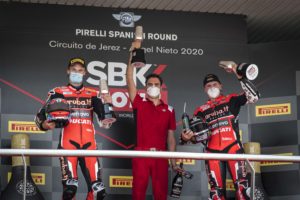
SBK a Jerez: avanti tutta!
A Jerez de la Frontera, seconda tappa del campionato SBK, si ri-accende lo spettacolo con Ducati protagonista. Doppietta di Redding e secondo posto in gara 2 per Davies.
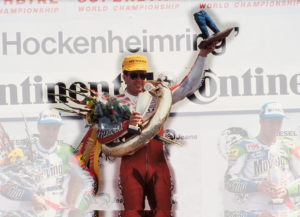
Doug Polen: campione del mondo SBK su Ducati nel 1991 e 1992
Doug Polen, lo statunitense che si è concesso il lusso di vincere il Mondiale Superbike in sella a una Ducati privata nel 1991 e di bissare da ufficiale l’anno successivo.

